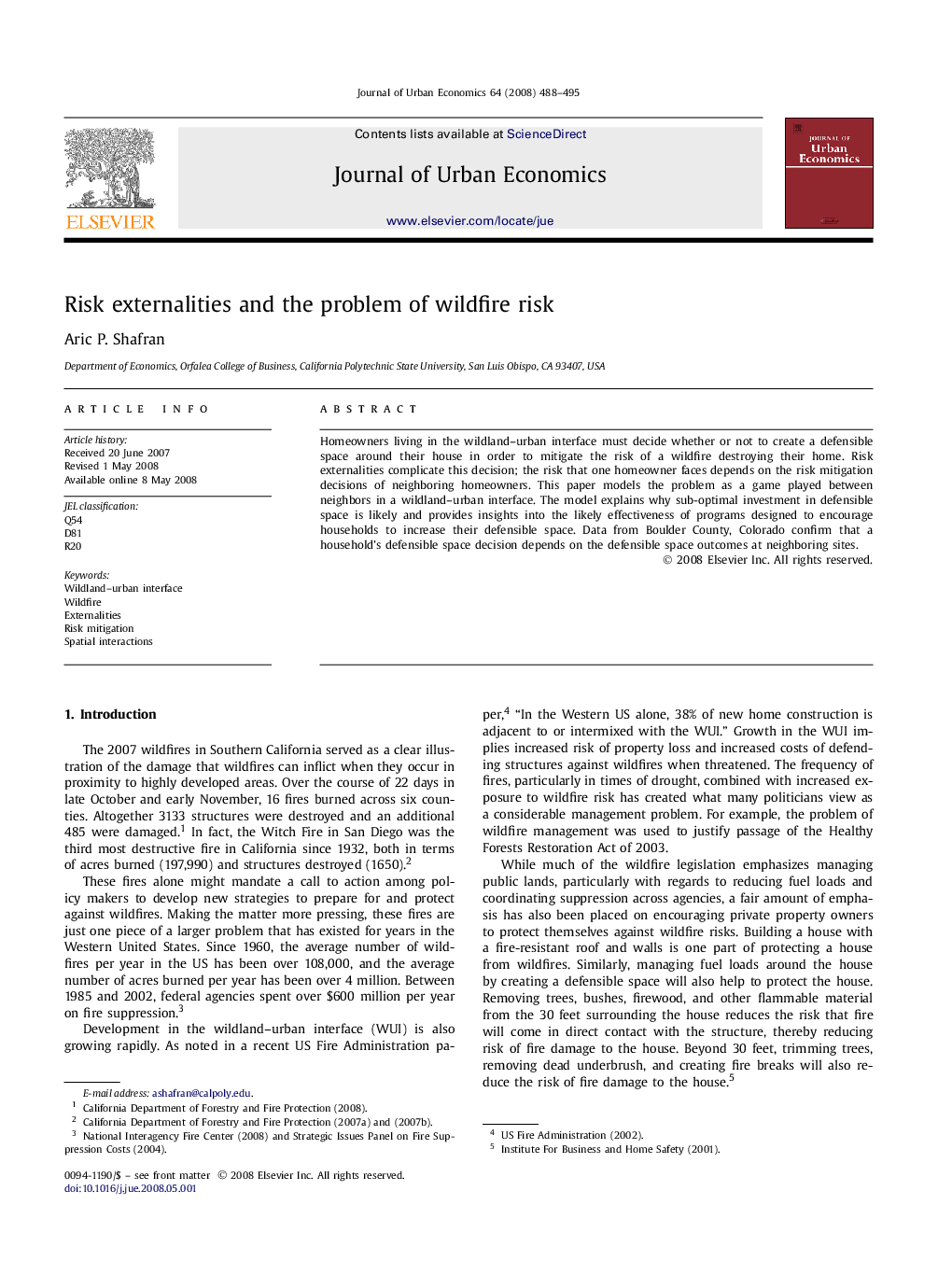| Article ID | Journal | Published Year | Pages | File Type |
|---|---|---|---|---|
| 971599 | Journal of Urban Economics | 2008 | 8 Pages |
Homeowners living in the wildland–urban interface must decide whether or not to create a defensible space around their house in order to mitigate the risk of a wildfire destroying their home. Risk externalities complicate this decision; the risk that one homeowner faces depends on the risk mitigation decisions of neighboring homeowners. This paper models the problem as a game played between neighbors in a wildland–urban interface. The model explains why sub-optimal investment in defensible space is likely and provides insights into the likely effectiveness of programs designed to encourage households to increase their defensible space. Data from Boulder County, Colorado confirm that a household's defensible space decision depends on the defensible space outcomes at neighboring sites.
